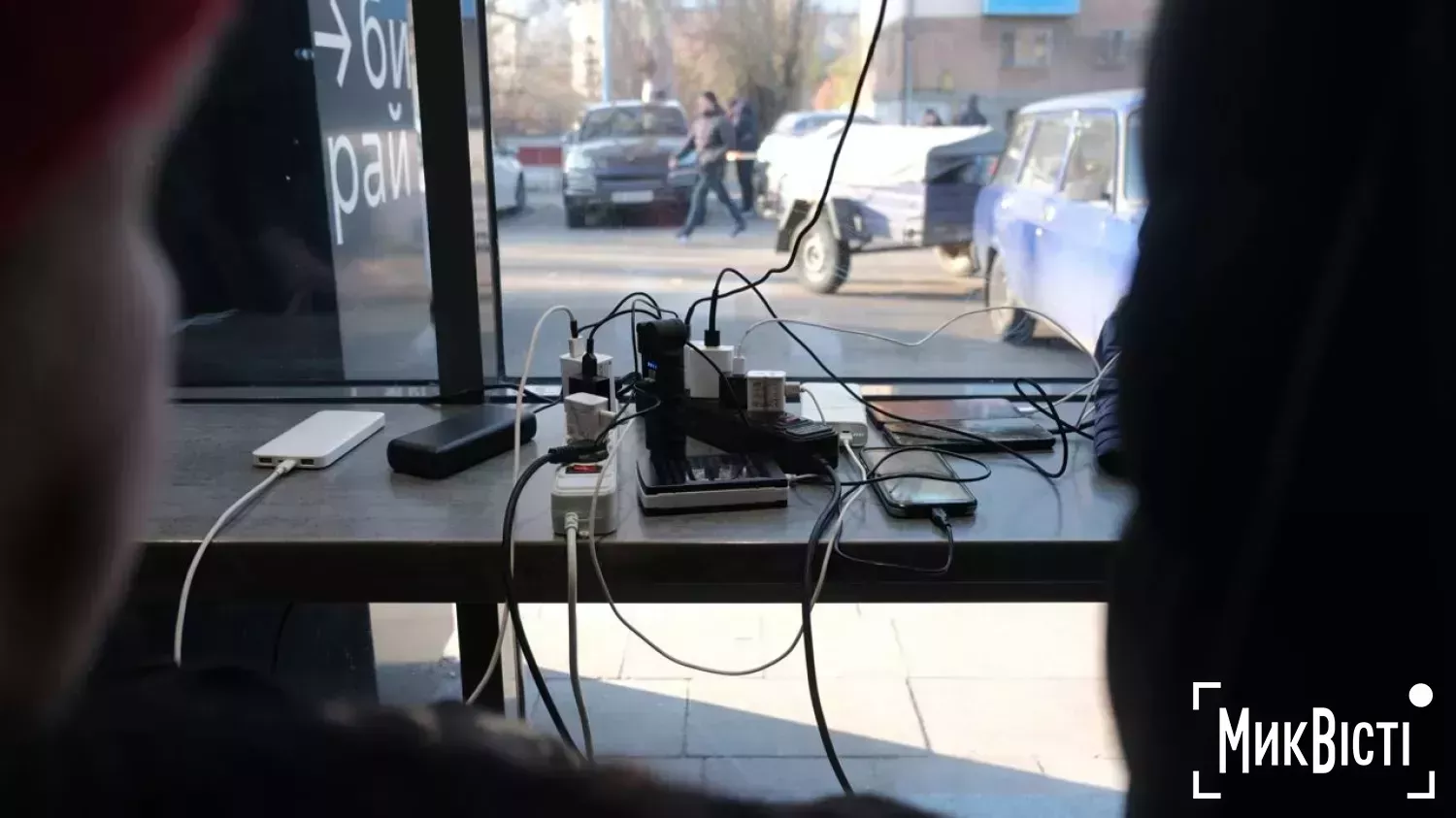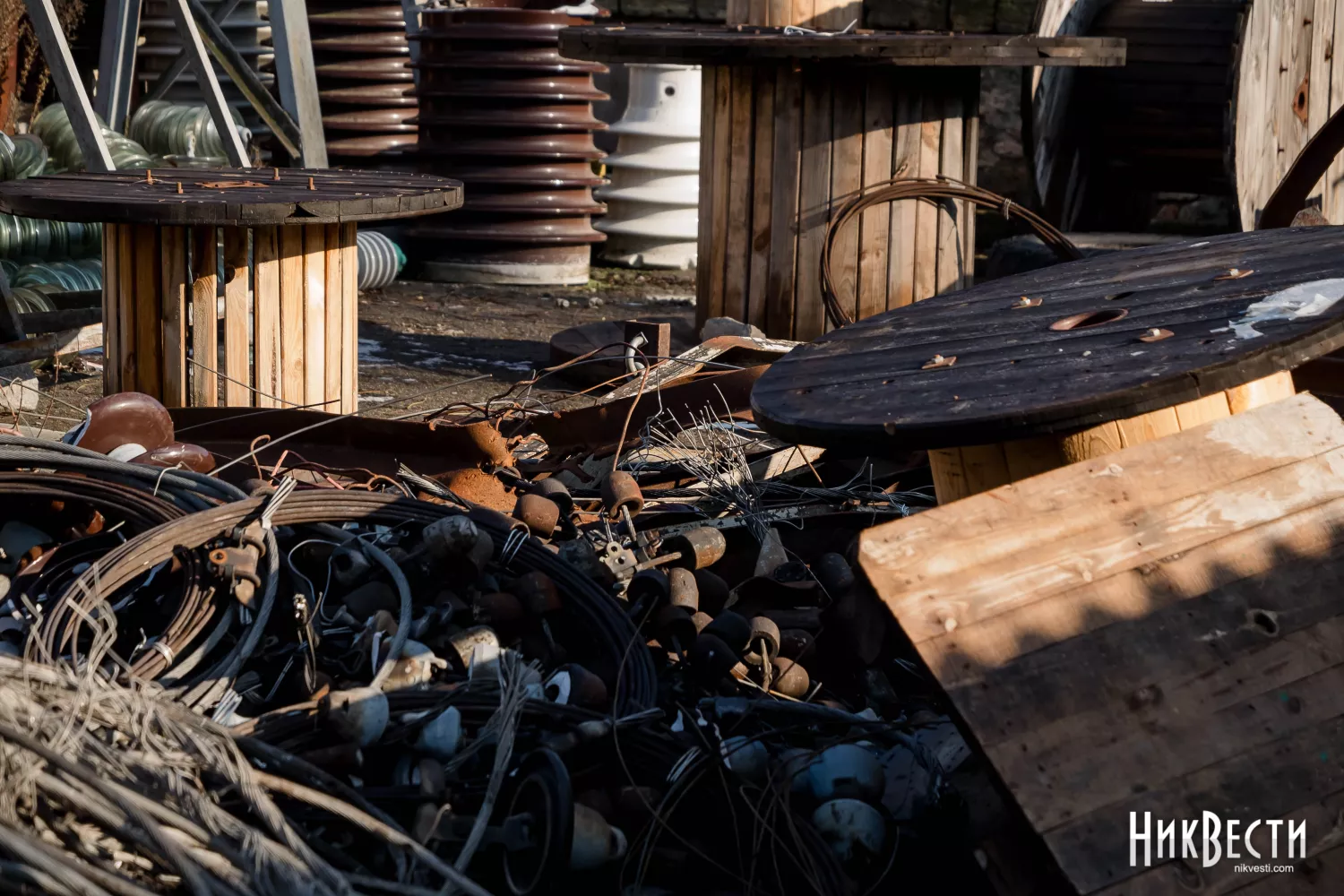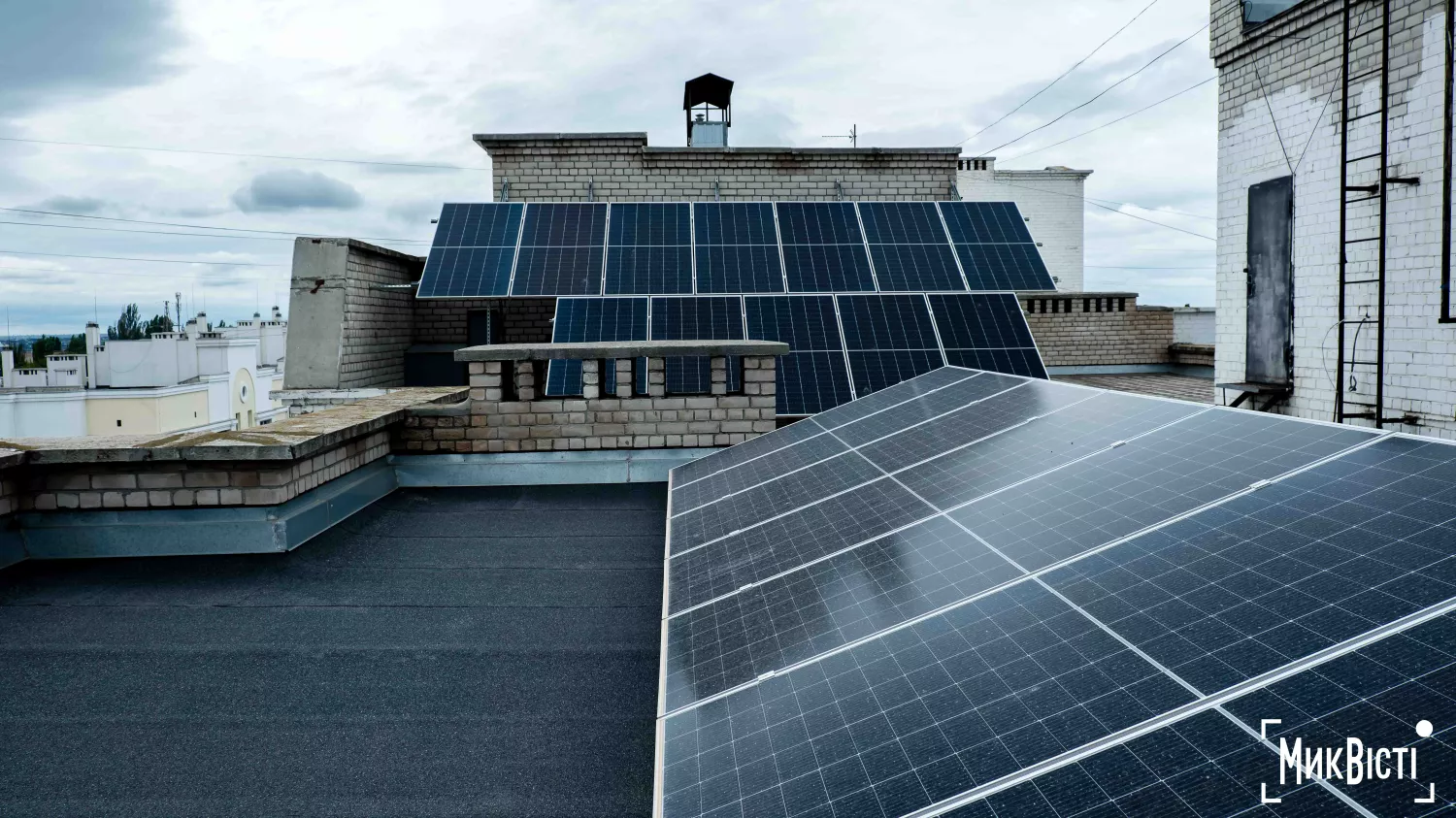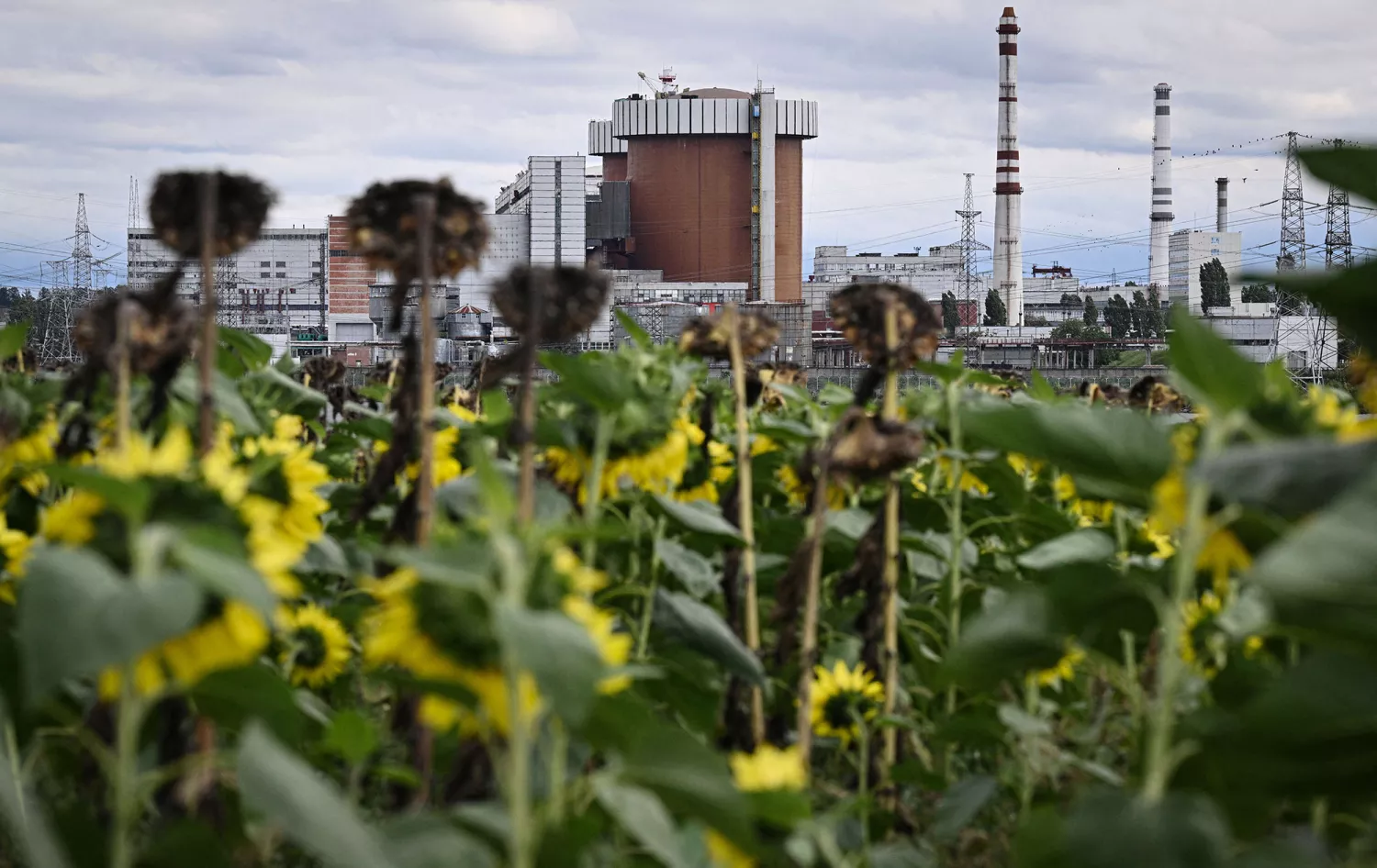«There should be many different sources of electricity». How is Mykolaiv region preparing for power outages?
- News of Mykolaiv
-
•
-

- Yuliia Boichenko
-
•
-
17:30, 21 August, 2025
 Mykolaiv residents during the blackout, 29 November 2024, charge their phones in supermarkets, shops and post offices. Photo: NikVesti
Mykolaiv residents during the blackout, 29 November 2024, charge their phones in supermarkets, shops and post offices. Photo: NikVestiRussia periodically strikes at the energy sector in Mykolaiv region. One of the most massive was the attack in November 2024, when 70% of the region was left without electricity. It took more than a day to restore the power supply , and during that time, the region was subject to emergency blackouts. This situation showed that even a region with its own generation remains vulnerable.
Now Mykolaiv region is facing the question of how to make the system less vulnerable to attacks. NikVesti found out what the local authorities are already doing, what stocks and reserves the region is preparing and how international partners are helping.
Is Mykolaiv region ready for blackouts? Analysis in numbers
During the full-scale war, 1285 damages to electricity distribution facilities were recorded in Mykolaiv region. However, 99% of them have been repaired, the Mykolaiv Regional Military Administration told NikVesti. These are power grids and equipment used to transport electricity from power plants to consumers.
However, communities near the coast, close to the frontline, remain particularly vulnerable: Ochakiv or Kutsurub. They are still within reach of enemy artillery and FPV drones, and therefore at constant risk of being left without electricity, heat and communication.
In these conditions, the region is forced to build backup scenarios. For example, key power substations have been reinforced with Level I engineering protection. In fact, this is a set of measures that provide the primary level of protection for equipment from missile fragments, drones and other threats. Simple but effective methods such as big bags (sandbags) or gabions (metal nets with sand) are used to create a barrier that will reduce damage.
At the same time, all healthcare facilities, schools, and water utilities are provided with generators, according to the Mykolaiv Regional State Administration. According to official figures, there are more than 3,200 of them.
Another area is distributed generation. These can be solar panels on the roofs of houses, small wind farms or other sources that produce electricity and heat for local consumption. Thus, solar power plants have been installed in 31 institutions, 24 of which are medical facilities. Separately, cogeneration units are being installed: nine are already in operation, and another 12 are planned to be launched by the end of this year.
An «energy island» for Mykolaiv. What is it?
At the end of last year, the city authorities started talking about plans to create an «energy island». Mayor Oleksandr Sienkevych explained that this would provide Mykolaiv with electricity for at least a few hours during long power cuts.
«With the support of international partners, we are dealing with the issue of gas generation. We have a plan to create a separate energy island in Mykolaiv to provide electricity at least hourly during long power outages using our own generation capacity,» he said.
The city council then set up a working group to develop the city's Energy Sustainability Plan. To do this, it must first study the current state of the city's energy sector, First Deputy Mayor Vitalii Lukov told NikVesti.
«How is the plan drawn up? First, a database is collected — what we have. Then we define our vision and adjust our vision to the vision of our partners in order to get investments for global reconstruction and strengthen the resilience of the community,» he said.
This idea is supported by Denmark, which is also currently studying the state and operation of the energy infrastructure in the region, Jakob Hansen, head of the Danish Embassy's office in Mykolaiv, told NikVesti.
«We support this concept of an «energy island». At the end of 2022, it became clear that the Russians would strike at the generation and distribution of electricity. Therefore, it is necessary to provide the city with so-called sustainable, independent, decentralised power generation. This means installing cogeneration units and solar generation within the city. We realised in 2023 that this was necessary, and we continue to move in this direction,»said Jacob Hansen.
In today's realities, the region needs different sources of electricity, says Jakob Hansen. For example, solar panels cannot produce electricity without the sun, which means that they produce almost no current at night or in very thick clouds. And their charged batteries can operate from several hours to several days during outages, but it all depends on the capacity and consumption.
«These are challenges. That is why we generally talk about diversification. That is, there should be many different sources of electricity — not only for Mykolaiv, but for all communities. In an ideal world, there would be windmills, solar panels, gas engines, and cogeneration plants,» explained Jacob Hansen.
Hello! I am Yuliia Boichenko, the author of this article.
Thank you for your attention to our texts — it means a lot to the NikVesti team.
We regularly publish in-depth materials for those who want to understand the topic and get to the heart of the matter.
We have dozens of examples when our journalism, together with our readers, has influenced situations and changed them.
Join the NikVesti Readers’ Club — support independent journalism that matters.
Support us by joining the NikVesti Club
Denmark has helped Mykolaiv's energy sector by at least 20 million hryvnias. How exactly?
Denmark is currently providing support to Mykolaiv in the energy sector through the Energy Community Fund.
«More than 20 million euros have been spent on solar panels, cogeneration units, etc. for «Mykolaivoblteploenergo» alone, as well as on heating and boiler houses. And it is still being spent.
We also helped Mykolaiv CHP a lot, in various ways: heating mains, energy efficiency, various projects,» explained Jakob Hansen.
Denmark is currently studying the electricity distribution system in Mykolaiv region, says Jakob Hansen.
«We understand that the Russians will continue and, unfortunately, strike. We are currently working with «Mykolaivoblenergo», as there are certain vulnerabilities in the electricity distribution system. That is, we are talking about electricity distribution networks, because the Russians are striking at transit networks. Even if a lot of electricity is generated, for example, from wind farms or the South Ukrainian NPP, the enemy destroys substations «Ukrenergo» in the region,» he explained.
How does the South Ukraine NPP operate in the context of war?
The South Ukraine Nuclear Power Plant (SUNPP) provides more than 10% of Ukraine's total electricity production, generating about 17-20 billion kilowatt-hours annually, according to «Energoatom».
However, in the context of Russian shelling of the Ukrainian energy sector, the South Ukrainian NPP has to assess new risks and strengthen its own security. In particular, the nuclear power plant is building engineering defences, spending billions of hryvnias on this.
This decision was preceded by statements from the International Atomic Energy Agency (IAEA) about Russian drones flying near the South Ukraine NPP. In just one week, 17 Russian attack drones flew near the South Ukraine NPP.
«Some of them were located at a distance of about three kilometres from the plant», said IAEA Director General Rafael Grossi.
The situation at the NPP is monitored daily by IAEA representatives who are permanently present there. Their last rotation took place this month — in August 2025. The 45th team of international experts has already arrived at the nuclear power plant and will be monitoring nuclear and radiation safety there for three weeks.
The IAEA began monitoring the situation at the South Ukrainian Nuclear Power Plant at Ukraine's request after the enemy shelled the plant's industrial area. This happened on 19 September 2022, when an «Iskander» missile fell 300 metres from the reactors.
The shock wave damaged the NPP buildings and broke more than 100 windows. As a result, one of the hydroelectric units at Oleksandrivka HPP, which is part of the South Ukraine Energy Complex, was shut down. Three high-voltage power lines were also disconnected.
At present, the volume of electricity generation in Mykolaiv region far exceeds domestic consumption, the regional military administration told NikVesti. In fact, they added, the region is a supplier of electricity to other regions.
The region has a nuclear power plant, wind and solar power plants, as well as cogeneration units, said Vitalii Kim, head of the Mykolaiv Regional Military Administration. However, the region uses only up to 10% of the total amount of energy produced.
But, Vitalii Kim reminded, Mykolaiv region is part of the overall energy system of Ukraine, so power outages occur in accordance with the general rules that apply to all regions of the country.
«We suffer and are disconnected in a gentlemanly manner, just like all other regions. Ukraine is equal. We can't have a problem with electricity, but it all depends on how hard the whole of Ukraine suffers after the shelling,» he explained.
Mykolaiv's strategy is to combine several solutions. The South Ukraine Nuclear Power Plant provides the basic generation, but the main focus is on the resilience of the networks: from engineering protection of substations to local electricity and heat supply systems. Solar panels and cogeneration units are being installed in hospitals and schools to ensure that critical infrastructure can be maintained even during attacks. International partners are investing tens of millions of euros to reduce the risk of mass blackouts. Blackouts cannot be completely avoided, but the region is gradually building a system that can withstand shocks and ensure stability for residents and the economy.
Yuliia Boichenko, NikVesti

The work on this material became possible thanks to the Fight for Facts project, which is implemented with the financial support of the Federal Ministry of Economic Cooperation and Development of Germany.
Чому ви читаєте «МикВісті»? Яка наша діяльність найбільш важлива для вас? Та чи хотіли б ви стати частиною спільноти читачів? Пройдіть опитування, це анонімно і займе 5 хвилин вашого часу







